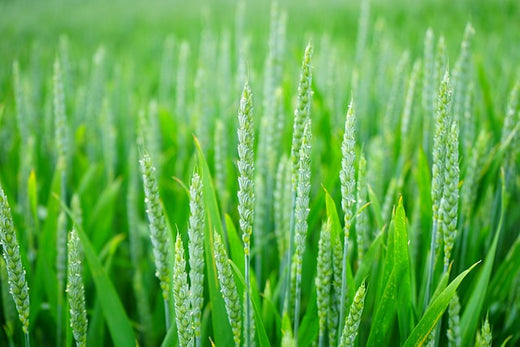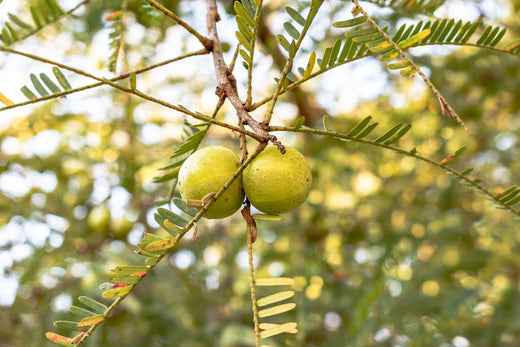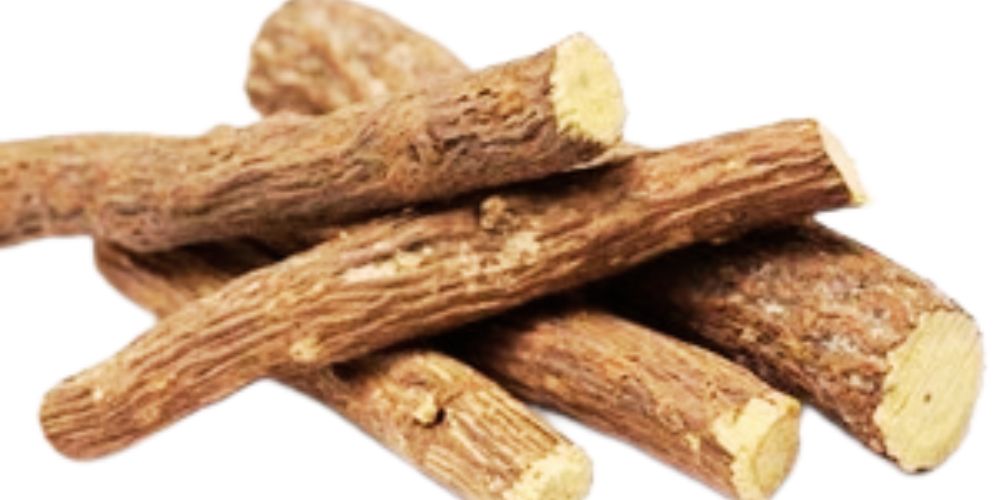Have you ever jumped on the wheatgrass bandwagon to make yourself fit and healthy? If not, it's not too late. Wheatgrass, a newly sprouted leaf of the wheat plant has gained much popularity in recent years. Starting from juice bars to health food stores, it is one of the trendiest ingredients that has entered the world of natural health.
Most people in the USA take wheatgrass around a 1 to 2-ounce shot with their favorite juice or smoothie. But wheatgrass is also available in organic wheatgrass powder and supplements from various grocery stores and health stores.
It is prepared from fresh newly wheat plant leaves called Triticum aestivum. Farmers who have castles in their homes grow wheatgrass to feed animals. But nowadays, people buy this wheatgrass or grow it in their gardens to add to their diet. It is ready to use within 7 to 10 days after planting.
When you see it at first glance, it looks like grass, but these young shots are packed with nutrients that offer many health benefits. Still not convinced? The below benefits help you to learn more about wheatgrass.
How to Grow Wheatgrass?
When you plan to grow wheatgrass it must be away from direct sunlight, and the temperature should be mild. First, soak a handful of wheat in water for 8-10 hours before growing. Next, drain the water from the soaked wheat and allow the seeds to sprout for around 15 hours.
Now, take earthen pots or wooden trays to grow the wheatgrass. First, fill them with compost manure; after that put seeds in it, cover them with a dark cloth. A sprinkling of water must be done once or twice a day.
List of Wheatgrass Health Benefits
Health food experts have been talking about wheatgrass for years, but still, the research on this plant is going on to prove the claim.
1. Treat Skin Diseases
 Image source: photo by prostooleh: freepik
Image source: photo by prostooleh: freepik
According to a report, if individuals drink wheatgrass juice daily, skin diseases like eczema and psoriasis will be eliminated. Until now, no other expert has conducted this study to support this claim, but many users have anecdotal proof that shows wheatgrass helped them clear their skin.
On the other hand, wheatgrass is also infused with antifungal properties, which help treat skin infections.
2. Helps in Preventing Cancer
Wheatgrass is full of antioxidant properties that help prevent cancer. Some of the test-tube studies show that wheatgrass can easily kill cancer cells.
Apart from that, it also helps in reducing the negative effects of conventional cancer treatments, but it is not fully proven.
3. Reduce the Cholesterol Level
Cholesterol is found throughout the body as a waxy substance that is useful to produce hormones and bile. But if the cholesterol level in the body becomes high, it can block blood flow and increase the risk of heart disease.
Several studies support that wheatgrass helps in lowering cholesterol levels. But further studies are required to determine how wheatgrass or its supplements affect cholesterol levels in an individual.
4. It Keeps Digestion Perfect
 Image source: phot by benzoix: freepik
Image source: phot by benzoix: freepik
Wheatgrass, the healthy diet option, contains enzymes that help the body break down food by easily absorbing nutrients. This process aids in good digestion. Drinking wheatgrass juice regularly in proper quantity will detoxify the digestive system, leading to reduced gas, stomach upset, and gas
Also read:
- Ashwagandha benefits in daily life
- Turmeric uses with related Ayurvedic products by Zandu
5. Helps in Losing Weight
Overweight people always go for different ways to lose excess weight from the body. Thus, if you want to lose weight, wheatgrass is the best option. It is full of nutrients that keep the body healthy and work to its full capacity which helps in losing weight.
It is proved by a small human trail which results in losing weight. However, wheatgrass helps you lose weight as it keeps the body active and helps you stay full for a long time. This process will not make you run every hour to the pantry.
6. It Helps in Blood Sugar Regulation
High blood sugar level causes numerous symptoms in the individual body, like, thirst, frequent urination, fatigue, and headaches. However, if the blood sugar level is controlled on time it can create serious issues like nerve damage, vision problems, and skin infections.
Some animal studies show that wheatgrass keeps the level of blood sugar under control.
7. Improves Immunity
 Image source: photo by cookie_studio: freepik
Image source: photo by cookie_studio: freepik
Health experts state that wheatgrass has the ability to increase the red blood cells in the human body. This ability improves the overall immunity of the individual body. In 2004 a study by the Journal of Pediatrics showed that wheatgrass fully supports red blood cells so strongly that it reduces the need for transfusions in patients.
So, to give your immune system a jolt, take a shot of wheatgrass juice to get rid of a cold, flu, or any infection.
8. It Helps Acne Scars go Away
The young blades of wheatgrass are rich in amino acids and minerals, which are essential for the body and reduce acne because of their detoxifying ability.
That means it contains 70% chlorophyll which stops the growth of bacteria. If the person is eating 6 ounces of wheatgrass, it will alleviate acne along with scarring.
9. Prevents Gray Hairs
The amino acid in wheatgrass builds red blood cells and makes the skin and hair healthy. It means if you intake wheatgrass and sprouts, it will turn gray hairs into natural again by increasing your energy level.
Nutritional Facts About Wheatgrass
 Image source: Photo by RODNAE Productions: pexels
Image source: Photo by RODNAE Productions: pexels
Wheatgrass is also called a super-food as it contains all the essential vitamins, antioxidants, minerals, and important nutrients that keep the body healthy. Some of the nutrients present in Wheatgrass are:
- Vitamin C
- Vitamin A
- Iron
- Calcium
- Vitamins B
- Vitamin K
- Vitamin E
- Magnesium
Apart from the above nutrients, it is also rich in enzymes, chlorophyll, and phytonutrients.
|
|
|
100 |
|
50 |
|
50 |
|
1 |
|
0.1 |
|
2.45 |
|
172 |
How Should You Integrate Wheatgrass Into Your Daily Routine?
If you haven't taken wheatgrass, don't underestimate its power as it is a very potent superfood. But too much intake of wheatgrass can leave the person nauseous and sick. According to experts, young children, older adults, and most importantly, pregnant women must consult the doctor before adding wheatgrass in their diet.
Here are some of the tips to start wheatgrass in your diet.
- If you want to start taking wheatgrass in your diet, then begin with just one ounce per day and then increase up to 2 ounces every day. However, a typical wheatgrass daily dose is up to 4 ounces.
- It must be consumed empty stomach or with any fruit or vegetables. Ensure not to have it after a meal; otherwise, it will make you feel nauseated.
- If you think of replacing a meal with wheatgrass juice or any supplement, then due to the few calories your daily meal diet will not be fulfilled.
How to use Wheatgrass Powder or Juice?
First, let's have a look at how you must prepare fresh wheatgrass juice at home:
- Wash some freshly cut wheatgrass thoroughly so that all the dirt is removed.
- Now, crush it on the pounding table to get the juice.
- Next, strain the freshly-pound juice with the help of a clean piece of cloth or via a strainer.
Moreover, you can also use an electric mixer's help to make juice or buy it from the market. Remember one thing before you start taking wheatgrass juice or any other supplement ensure to consult a qualified doctor.
Wheatgrass and Ayurveda
In Ayurveda, wheatgrass is known as Godhuma, Gehan or Kanak. It is used to treat sore throats and boils. When kapha dosha gets imbalanced, the problem of sore throat erupts. The person suffering from such a problem will experience slight coughing as mucus builds up which irritates the throat.
Having wheatgrass in this situation balances the kapha and prevents mucus from collecting, by which sore throat gets relieved. Apart from Sore throat, it also treats boils or vidradhi. It occurs when three doshas get imbalances: vata, pitta, and kapha.
This issue can also lead to inflammation, and if the paste of wheatgrass is applied to the area, it reduces inflammation and prevents boils.

Image source:
Interaction of Wheatgrass with other Drugs
Several reports show that wheatgrass benefits from adverse interactions with other drugs. This is why doctors suggest not to self-medicate or discontinue your current treatment, if you think that wheatgrass will not offer the best result. That means consult the doctor before starting wheatgrass juice.
What Does Wheatgrass Taste like?
In terms of flavor, wheatgrass tastes like grass, because of which many people can't just take the plunge. That means they cannot drink juice just because of the smell by pinching their nose and taking a swig. But luckily, wheatgrass is also available in numerous forms so that everyone can have it and take the benefits.
One such way to consume wheatgrass is in greens powders, as it is full of an assortment of vegetables and algae, such as spirulina and chlorella.
The Bottom Line
This is all about Wheatgrass benefits, uses, and Ayurvedic uses. Wheatgrass is a widely used herb these days, which you will find in many products these days. It can cure multiple health issues in the human body. So, no matter which type of health issue you are suffering from, wheatgrass will eliminate all of them within no time. But consult the doctor or Ayurvedic experts before using it for the best results.






